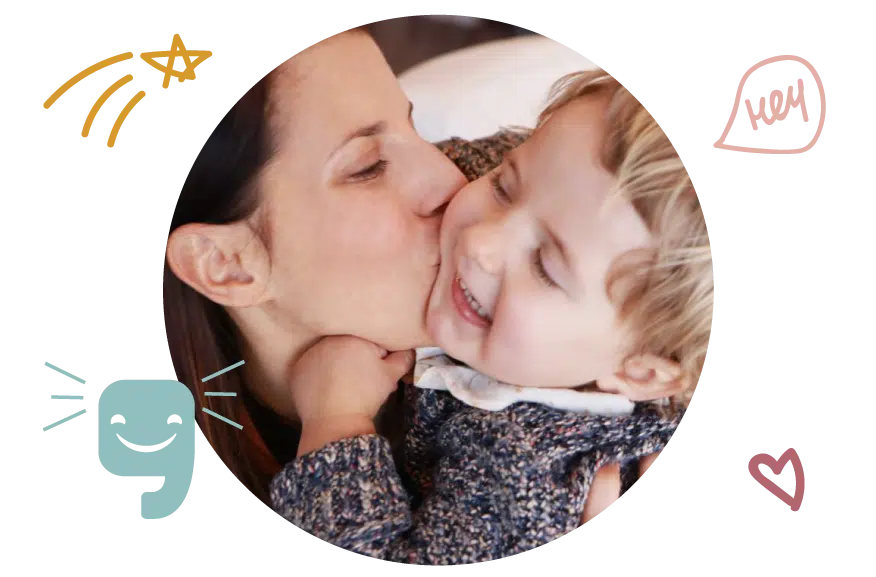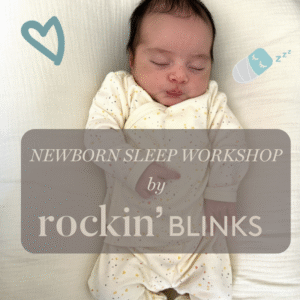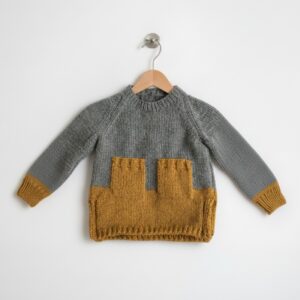0-3 Months
The Newborn Sleep Guide: Everything you need to know
NEWBORN SLEEP STAGE:
0 – 3 Months
SLEEP GOALS:
14-17 hours of total sleep, usually happening in 30-minute to 4-hour stretches.
At this stage in your newborn’s sleep journey you should rest easy knowing there’s no such thing as bad sleep habits.
Simply, because sleep patterns don’t exist yet. One week you have a sleepy baby you’re waking to feed, and the next you’re wondering when nighttime fussiness will end.
Newborns experience both active and quiet sleep stages, so don’t be surprised by grunts, brief cries and other noises during the active stage. Eventually, between 6-8 weeks, your baby will start producing its own melatonin and be able to sleep longer stretches during the night.

Newborn Baby Sleep Guide
Select a topic
- There is a lot going on in your baby’s development during the first months of life. Your baby is learning they are safe and will be taken care of as their parents attend to their needs. Each day, they will be able to see and hear more, and start moving their bodies in new ways. Your baby will surprise you with sweet coos around 4 weeks and show you their sweet smile around 6 weeks.
It’s common to notice more fussiness around Week 2, especially in the evening. Don’t worry, easier times are ahead! Crying usually peaks around Week 6.
- Around one month, babies begin to rhythmically cycle cortisol, the hormone responsible in part for alertness and increased appetite. Cortisol levels are naturally higher in the morning and decline through the afternoon and evening, helping to signal it’s time to go to sleep.
- Your baby’s circadian rhythms will mature around 6-8 weeks (counting from the estimated delivery date), helping him to develop longer stretches of consolidated sleep at night and more stable periods of wakefulness during the day.
- Sleep patterns don’t exist…yet. The internal mechanisms that allow babies to understand day vs night don’t really develop until about 2 months of age.
Baby will start sleeping longer stretches at night when they start producing their own melatonin around 6 weeks of age. This, combined with increased cortisol production will help babies develop longer stretches of consolidated sleep at night and more stable periods of wakefulness during the day.
- Newborn sleep is often chaotic, no matter how hard you try to get your baby on a schedule.
- Newborns experience both active and quiet sleep stages. Don’t be surprised by grunts, squirming, brief cries and other noises during the active stage.
- Circadian rhythms allow us to match our physical, mental, and social activity with the time of day. The first light of day is the strongest signal that our body’s circadian rhythm senses to help us wake up for the day.
- Initially, babies have a weak circadian rhythm, given to them by the hormones that crossed through the placenta or their mother’s breastmilk.
Your baby’s circadian rhythm will mature around 6-8 weeks (counting from the estimated delivery date), helping them to stay more wakeful during the day and sleep more during the night.
- Studies show that babies — even newborns — benefit from being outside as much as possible during the day and minimizing artificial light at night.
Babies who were exposed to more bright light at six weeks of age slept for longer stretches of time at twelve weeks of age, as compared to babies with lower levels of daytime light.
- Even in premature infants, cycled lighting (as opposed to constant low-level lighting) results in clear patterns of sleep and activity. Since the light/dark cycle is the strongest influence on a baby’s developing circadian rhythm, paying attention to your baby’s environment is a powerful way to improve sleep.
- Light fading at the end of the day helps your baby produce melatonin, which will help their body understand it is nighttime.
- At night, keep the bedroom pitch black if possible. Even the smallest amount of light can impact natural melatonin production. If a nightlight is needed to help you during night wakings, keep it dim. Red or orange-hued light is less sleep-disruptive than blue or white light.
- Your baby will need to feed during night and day with no set schedule during the first few months.
Don’t go more than 3 hours between daytime feeds to ensure healthy growth. It’s ok to wake your baby to eat! Your pediatrician will let you know when it’s ok to let baby sleep at night without waking them.
- As your baby grows, experiment with separating feeding from sleep. While it’s natural for a newborn to fall asleep while feeding, it can become a habitual association that baby requires in order to sleep. You can start practicing new habits with your baby around 2 months old. At first this might mean just watching your baby as they start to drift off and pulling baby off of the breast or removing the bottle before baby is fully asleep. If your baby becomes distressed, you can continue holding or rocking for soothing.
- There’s no such thing as bad sleep habits for newborns. Feed, rock, babywear, swaddle, offer a pacifier or put on some white noise if it helps you soothe your baby.
Keep your newborn well rested by limiting active time during the day. That will help ensure they don’t get overtired.
- Responding to your baby’s needs builds trust. Is she tired? Hungry? Wet? Pause and observe; you’ll soon understand what your baby is trying to tell you.
- Try a bedtime routine. Doing a few activities in the same order every night lays the foundation for healthy sleep.
- Get help if you can! Taking care of a newborn baby is a lot of work, and it truly takes a village. If there are more hands around to help, accept them, especially when it comes to sleeping and feeding.
- While naps are necessary during the day, they will also be irregular at this stage and may remain that way until baby’s own circadian rhythm matures.
During your baby’s first few weeks of life, 45 minutes awake might be all that your baby can tolerate. By two months of age, a rhythm develops of 90 minutes of alertness between daytime naps.
- Watch for baby’s “sleep signs” like yawning, turning his head away, or looking to suck when he’s already been fed. Take advantage of this window before your baby gets overtired.
- Your baby’s daytime rhythm will start becoming more regular between 12-16 weeks old.
- A newborn’s natural position is laying on their back. From this position they will learn how to roll and then crawl and then stand on their feet. But they will need a lot of time to practice! Let them experiment how to move their bodies while laying on the floor.
- You might be considering bouncers, carriers and car seats to get a break a break, but
make sure your baby has plenty of time to practice free movement by laying on their backs on the floor while they are awake. While it may not look comfortable to you, we promise your baby is perfectly fine laying independently on their back.
- Some babies may roll from back to tummy as young as 2 months old, while others will not discover this ability for a few more months. Even if your baby is not yet rolling, tummy time is advised to help babies strengthen the muscles of their neck.
- As soon as your baby starts rolling from back to tummy, it’s important to stop swaddling them when they sleep to reduce the risk of suffocation.
The AAP recommends rolling babies to their backs if they roll to their tummy during sleep until they discover how to roll both ways independently. Once they can roll from back to tummy and from tummy to back, you can let them choose what position is most comfortable for them to sleep.
- Utilize white noise. It’s soothing and can also help block disruptive noises. (PS: Volume shouldn’t be louder than a bathroom shower!)
- Keep it cool. 68-72 degrees is the recommended temperature for infants.
- Swaddle up. Soothe your baby with a snug swaddle that restricts arm (but not leg!) movement. You’ll want to stop swaddling at 8 weeks, or when your baby shows signs of rolling.
- Jenni, O. G., Borbély, A. A., & Achermann, P. (2004). Development of the nocturnal sleep electroencephalogram in human infants. American Journal of Physiology – Regulatory Integrative and Comparative Physiology (3 55-3). https://doi.org/10.1152/ajpregu.00503.2003
- Bates, K., & Herzog, E. D. (2020, April 15). Maternal-Fetal Circadian Communication During Pregnancy. Frontiers in Endocrinology, Vol. 11, p. 198. https://doi.org/10.3389/fendo.2020.00198
- Ardura, J., Gutierrez, R., Andres, J., & Agapito, T. (2003). Emergence and evolution of the circadian rhythm of melatonin in children. Hormone Research (2), 66–72. https://doi.org/68571
- Ivars, K., Nelson, N., Theodorsson, A., Theodorsson, E., Ström, J. O., & Mörelius, E. (2015). Development of Salivary Cortisol Circadian Rhythm and Reference Intervals in Full-Term Infants (6). https://doi.org/10.1371/journal.pone.0129502
- Henderson, J. M. T., France, K. G., & Blampied, N. M. (2011). The consolidation of infants’ nocturnal sleep across the first year of life. Sleep Medicine Reviews (4), 211–220. https://doi.org/10.1016/j.smrv.2010.08.003
- Goodlin-Jones, B. L., Burnham, M. M., Gaylor, E. E., Anders, T. F., Lin, G. G., & Scott, J. G. (2001). Night Waking, Sleep-Wake Organization, and Self-Soothing in the First Year of Life. Journal of Developmental and Behavioral Pediatrics : (4), 226–233. https://doi.org/10.1016/j.pestbp.2011.02.012.Investigations
- Weinraub, M., Bender, R. H., Friedman, S. L., Susman, E. J., Knoke, B., Bradley, R., … Williams, J. (2012). Patterns of developmental change in infants’ nighttime sleep awakenings from 6 through 36 months of age. Developmental Psychology, Vol. 48, pp. 1511–1528. https://doi.org/10.1037/a0027680
- Williamson, A. A., Mindell, J. A., Hiscock, H., & Quach, J. (2019). Sleep Problem Trajectories and Cumulative Socio-Ecological Risks: Birth to School-Age. Journal of Pediatrics, 229-237.e4. https://doi.org/10.1016/j.jpeds.2019.07.055
- Meltzer, L. J. (2010). Clinical Management of Behavioral Insomnia of Childhood: Treatment of Bedtime Problems and Night Wakings in Young Children. Behavioral Sleep Medicine(3), 172–189. https://doi.org/10.1080/15402002.2010.487464
- Grigg-Damberger, M., Gozal, D., Marcus, C. L., Quan, S. F., Rosen, C. L., Chervin, R. D., … Iber, C. (2007). The visual scoring of sleep and arousal in infants and children. Journal of Clinical Sleep Medicine : JCSM : Official Publication of the American Academy of Sleep Medicine,(MARCH 2007), 201–240. Retrieved from http://www.ncbi.nlm.nih.gov/pubmed/17557427
- Harrison, Y. (2004). The relationship between daytime exposure to light and night-time sleep in 6-12-week-old infants. Journal of Sleep Research (4), 345–352. https://doi.org/10.1111/j.1365-2869.2004.00435.x
- Rivkees, S. A. (2003). Developing Circadian Rhythmicity in Infants. Pediatrics (2), 373 LP – 381. Retrieved from http://pediatrics.aappublications.org/content/112/2/373.abstract
- Iwata, S., Fujita, F., Kinoshita, M., Unno, M., Horinouchi, T., Morokuma, S., & Iwata, O. (2017). Dependence of nighttime sleep duration in one-month-old infants on alterations in natural and artificial photoperiod. Scientific Reports. https://doi.org/10.1038/srep44749
- Adams, E., Savage, J., Master, L., & Buxton, O. (2020). Time for bed! Earlier sleep onset is associated with longer nighttime sleep duration during infancy. Sleep Medicine, 238–245. https://doi.org/10.1016/j.sleep.2020.07.003
- McGraw, K., Hoffmann, R., Harker, C., & Herman, J. H. (1999). The development of circadian rhythms in a human infant. Sleep (3), 303–310. Retrieved from http://www.ncbi.nlm.nih.gov/pubmed/10341380
- Mindell, J. A., Li, A. M., Sadeh, A., Kwon, R., & Goh, D. Y. T. (2015). Bedtime routines for young children: a dose-dependent association with sleep outcomes. Sleep 38 (5), 717–722. https://doi.org/10.5665/sleep.4662
- Pinilla, T., & Birch, L. L. (1993). Help Me Make It Through the Night: Behavioral Entrainment Breast-Fed Infants’ Sleep Patterns. Pediatrics 91 (2), 436–444. Retrieved from http://pediatrics.aappublications.org/content/91/2/436
- St. James-Roberts, I., Roberts, M., Hovish, K., Owen, C., & James-Roberts, I. S. (2015). Video Evidence That London Infants Can Resettle Themselves Back to Sleep After Waking in the Night, as well as Sleep for Long Periods, by 3 Months of Age. Journal of Developmental and Behavioral Pediatrics : JDBP (5), 324–329. https://doi.org/10.1097/DBP.0000000000000166
- Mindell, J. A., Sadeh, A., Kohyama, J., & How, T. H. (2010). Parental behaviors and sleep outcomes in infants and toddlers: a cross-cultural comparison. Sleep Medicine (4), 393–399. https://doi.org/10.1016/j.sleep.2009.11.011
- Anders, T. F., & Keener, M. (1985). Developmental course of nighttime sleep-wake patterns in full-term and premature infants during the first year of life. I. Sleep (3), 173–192. Retrieved from http://www.ncbi.nlm.nih.gov/pubmed/4048734
- Mindell, J. A., & Owens, J. A. (2015). A clinical guide to pediatric sleep : diagnosis and management of sleep problems (3rd ed.).
We are here to Help
At Rockin’ Blinks our certified sleep consultants will help you:

- Understand your newborn baby’s sleep
- Learn how to reduce risk of SIDS
- Find a sleep schedule that works for your and your newborn.
- Guide you on establishing healthy sleep habits from day one.

Lola Sánchez Liste is the CEO and founder of Rockin’Blinks
With a certification as a Children Sleep Coach by the Family Sleep Institute, Lola works directly with families to help them evaluate each child’s unique sleep situation, create sleep plans, and support and guide them towards better sleep.
Lola was born in Argentina, also lived in Spain and Honduras and has been based in New York for the past 10 years. She has witnessed how culture influences sleep habits and understands how each family is made of unique personalities, circumstances and stories.






